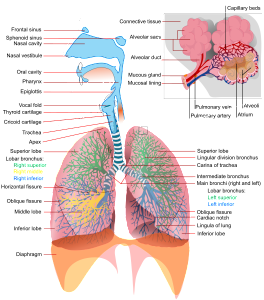The pulmonology unit is headed by an experienced pulmonologist , focusing on the diagnosis and therapy of respiratory problems including asthma, chronic obstructive and restrictive disorders. Again a host of diagnostic and therapeutic facilities are available to support this department.
Pulmonary rehabilitation or respiratory therapy may be initiated as a treatment after all or most other treatments do little to help the patient. Pulmonary rehabilitation is for patients whose respiratory function has decreased or improved very little, even with extensive medical treatment. Pulmonary rehabilitation is intended to educate the patient, the family, and improve the overall quality of life and prognosis for the patient. Although a pulmonologist may refer a patient to therapy, the therapy is generally practiced by respiratory therapists.
One of the first major discoveries relevant to the field of pulmonology was the discovery of pulmonary circulation. Originally, it was thought that blood reaching the right side of the heart passed through small ‘pores’ in the septum into the left side to be oxygenated, as theorized by Galen; however, the discovery of pulmonary circulation disproves this theory, which had previously been accepted since the second century. Thirteenth century anatomist and physiologist Ibn Al-Nafis accurately theorized that there was no ‘direct’ passage between the two sides (ventricles) of the heart. He believed that the blood must have passed through the pulmonary artery, through the lungs, and back into the heart to be pumped around the body. This is believed by many to be the first scientific description of pulmonary circulation.
